Small Animal Telemetry Mini-Series
1ˢᵗ Session
Webinar: Experimental Design for Chronic Telemetry Studies
Date: October 7, 2020
Ensuring you collect the best and most physiologically accurate data from your chronic telemetry experiments requires careful planning and experimental design. This webinar gave an insight into the practical aspects of designing chronic animal experiments to set you on the best path for success. We discussed the benefits of chronic studies, how to select the most appropriate sample size for your study, some basic tips and tricks for data acquisition and handling and finally how to ensure high animal welfare.
Learning Objectives:
- What are the benefits of chronic over acute studies?
- How to decide the best sample sizes and the length of experiments?
- Basic tips for data acquisition and handling
- How to maintain high animal welfare standards
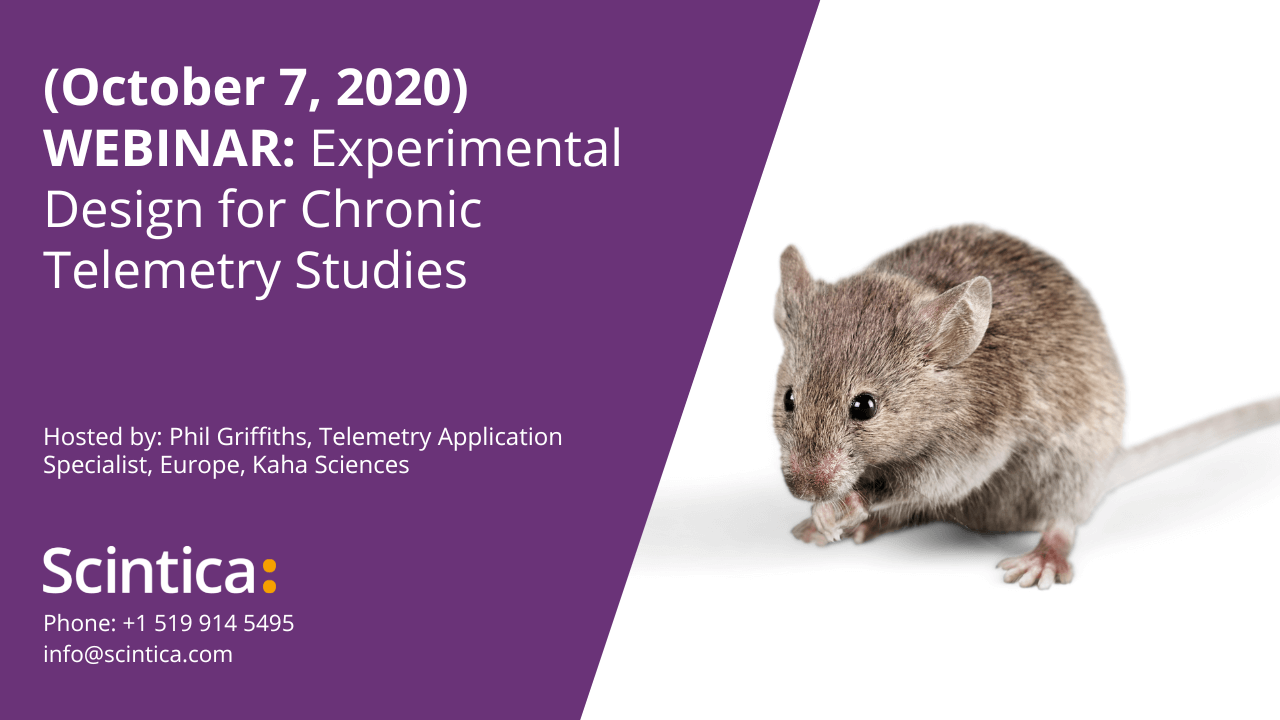
About the Speaker (s)

Phil Griffiths
Telemetry Application Specialist
Europe, Kaha Sciences
Phil has a BSc and PhD in Neuroscience from the University of Bristol, UK and spent several years at Bristol as a post-doc investigating the central control of blood pressure. Over the course of his career in academia he gained extensive expertise in rodent in vivo procedures, including in vivo electrophysiology and blood pressure telemetry using the Kaha Sciences telemetry system. He has presented at several international conferences and published his research on the role of the neuropeptide apelin in the central control of blood pressure. Phil’s current role at Kaha Sciences is to provide sales and technical support within the European region, utilising his experience as a user to understand customer applications and needs.
2nd Session
Webinar: Handling and Analyzing Large Telemetry data Sets
Date: October 28, 2020
Telemetry allows the long-term collection of data over days, weeks or months from animals in their home cages. Performing chronic studies presents a number of opportunities in terms of experimental design but also results in the collection of very large data sets. Large data sets come with challenges for the collection and analysis of the data. This webinar covered common issues encountered acquiring and analyzing large data sets from chronic telemetry studies, and potential solutions such as scheduling data sampling and automating data collection and analysis. ADInstruments LabChart was used as examples of how this can be achieved using macros in data acquisition systems. The LabChart macros introduced in this webinar are available for download here.
Learning Objectives:
- How can scheduling of data acquisition be used to reduce the amount of data collected while still ensuring that physiological changes are accurately captured?
- Using macros to automate data acquisition and file saving to keep file sizes manageable
- Automatic processing of data files using macros to perform basic analysis quickly and easily
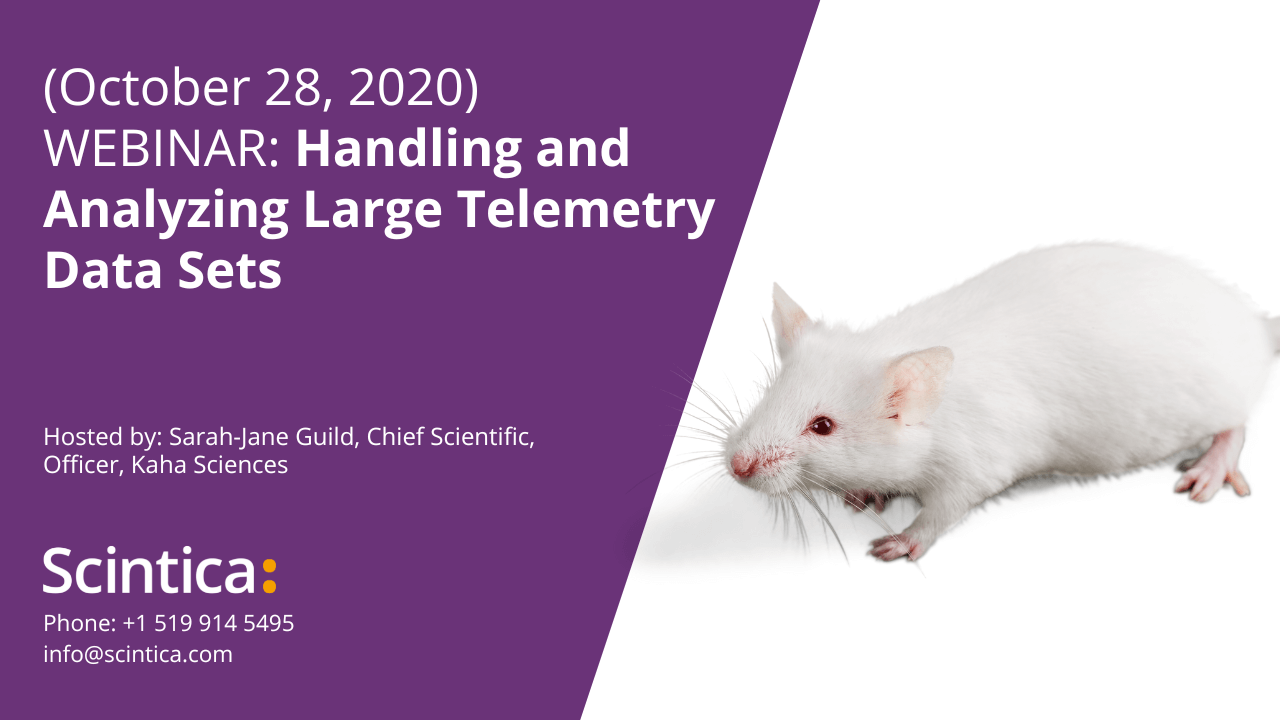
About the Speaker (s)

Sarah-Jane Guild
Telemetry Application Specialist
Chief Scientific Office
Kaha Sciences
Sarah-Jane has more than 15 years’ experience working with telemetry and has been involved with the Kaha system since the early Telemetry Research days. With a background in engineering and physiology, she has a good understanding of both the technical aspects of our system and its scientific application. Sarah-Jane has extensive surgical experience and enjoys working with our customers to get the most out of their telemetry system. With a PhD in Physiology and Electrical and Electronic Engineering, Sarah-Jane also holds a part-time position as a Senior Research Fellow at the University of Auckland in the Department of Physiology and the Auckland Bioengineering Institute. Her research areas include cardiovascular physiology, intracranial pressure, optogenetics, and the development of implantable devices.
3rd Session
Webinar: Therapeutic Relevance of Elevated Blood Pressure After Ischemic Stroke in the Hypersensitive Rat
Date: November 4, 2020
Dr Pratik Thakkar from the University of Auckland presented data from their recent Hypertension publication where they used Cohousing mode (two telemeters in a single rat) to simultaneously record ICP, BP and brain tissue oxygen in a rat model of ischemic stroke.
Spontaneously hypertensive rats were instrumented with telemeters to record BP, intracranial pressure, and brain tissue oxygen in a model of stroke. In different groups of rats, blood pressure was controlled to different levels before and after stroke to mimic clinical management of diagnosed and undiagnosed hypertensive patients. As well as presenting the scientific outcomes of this study, Pratik discussed the benefits and challenges of using telemetry for such a complex study and will share recommendations of things to consider when designing similar experiments.
Learning Objective:
- Measurement of tissue oxygen, intracranial pressure and blood pressure by telemetry in a rat model of stroke
- How does pre- and post-stroke treatment of hypertension affect post-stroke outcomes?
- The benefits and challenges of performing telemetry measurements and considerations for experimental design
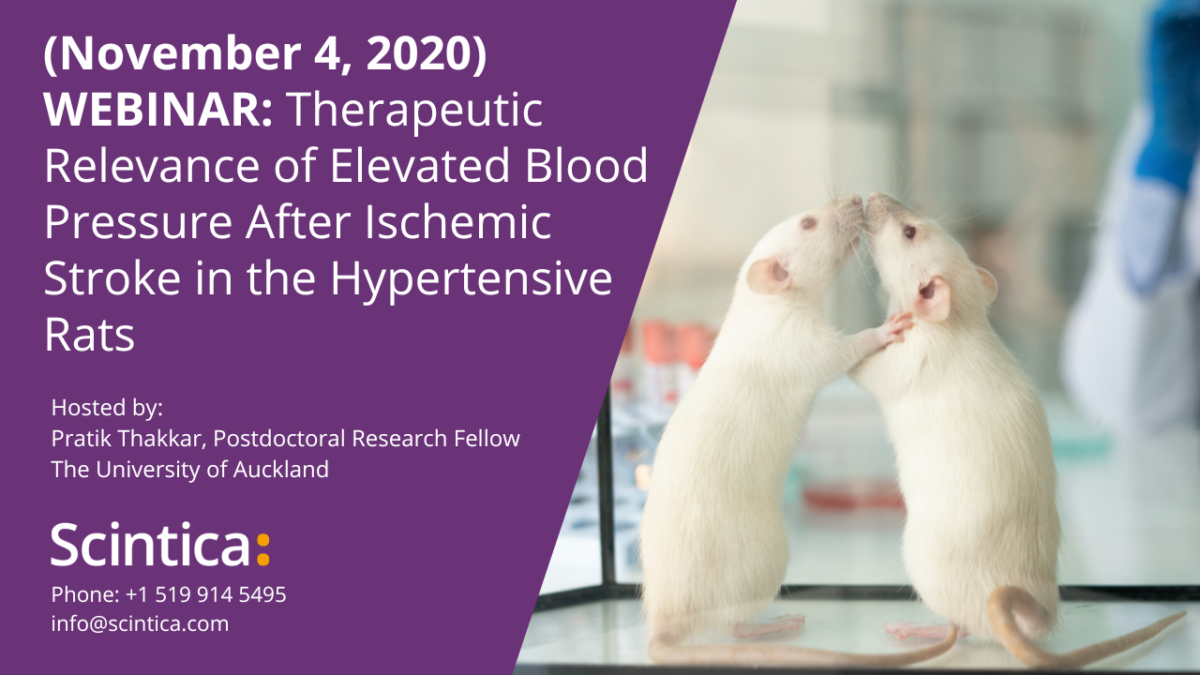
About the Speaker (s)

Patrik Thakkar
Post-Doctoral Research Fellow
The University of Auckland
Pratik has more than 8 years of progressive experience in the research, academic, hospital, and community division. Having a postgraduate in pharmacology and a PhD in physiology, he brings strong research, analytical, and laboratory skills. During his PhD, he explored the cerebrovascular research under the supervision of Dr Fiona McBryde and Dr Carolyn Barrett at the Department of Physiology, The University of Auckland. His PhD project was outlined to investigate the physiological role of elevated blood pressure after ischemic stroke in rats. He studied to improve the understanding behind high blood pressure response in the acute period of stroke orienting important and real-world clinical scenarios. He has published two articles in high impact peer-reviewed Americal journals (Stroke and Hypertension) from his study. Currently, he is working as a postdoctoral research fellow in the Cardiorespiratory lab under the supervision of Prof Julian Paton looking at novel therapeutic targets in the carotid body to treat cardio-metabolic diseases.
4th Session
Webinar: Introduction to Measurement of Tissue Oxygen in Rats Via Telemetry
Date: November 11, 2020
Carbon paste electrodes connected to a potentiostat have been shown to provide stable measurement of tissue oxygen levels in vivo. Now wireless telemetry from Kaha Sciences allows the chronic long-term measurement of tissue oxygen in rats living in their home cages. This webinar discussed how tissue oxygen measurements are made using carbon paste electrodes, how they are calibrated, the advantages and the limitations. Potential applications of this technology will be highlighted with example data from our users that show how tissue oxygen measurements in the brain and kidney can be combined with pressure and biopotential signal measurement.
Learning Objectives:
- How are carbon paste electrodes used to measure tissue oxygen?
- Calibration and preparation of tissue oxygen telemeters
- Combining tissue oxygen measurement with pressure and/or biopotential signals
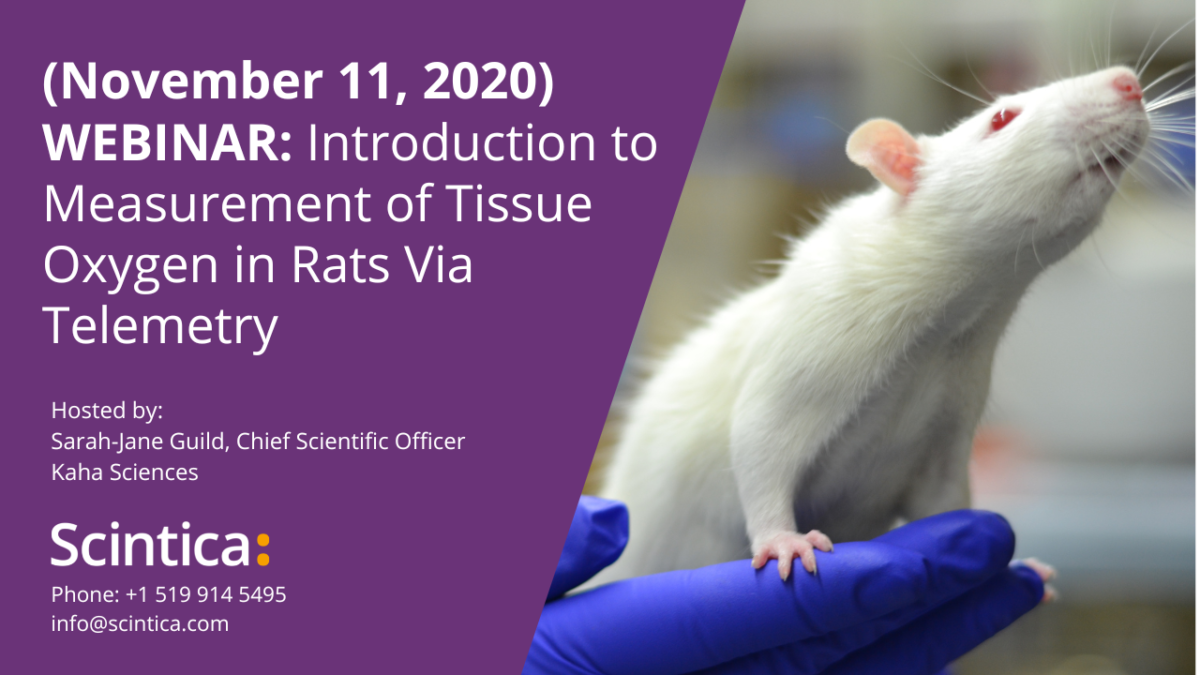
About the Speaker (s)

Sarah-Jane Guild
Telemetry Application Specialist
Chief Scientific Office
Kaha Sciences
Sarah-Jane has more than 15 years’ experience working with telemetry and has been involved with the Kaha system since the early Telemetry Research days. With a background in engineering and physiology, she has a good understanding of both the technical aspects of our system and its scientific application. Sarah-Jane has extensive surgical experience and enjoys working with our customers to get the most out of their telemetry system. With a PhD in Physiology and Electrical and Electronic Engineering, Sarah-Jane also holds a part-time position as a Senior Research Fellow at the University of Auckland in the Department of Physiology and the Auckland Bioengineering Institute. Her research areas include cardiovascular physiology, intracranial pressure, optogenetics, and the development of implantable devices.
5th Session
Webinar: Tips and Tricks for Successful Rat Telemetry Blood Pressure Recordings
Date: December 2, 2020
Chronic blood pressure recordings from the abdominal aorta are commonplace in cardiovascular physiology, however the surgical implantation of catheters can be challenging. This webinar provided an overview of the surgical protocol that we recommend when implanting Kaha Sciences blood pressure telemeters. We also discussed some simple strategies to avoid common problems and the troubleshooting of unexpected signals. Full surgical videos are also available on the Kaha Sciences Knowledge Centre.
Learning Objectives:
- Overview of the surgical approach for implanting Kaha Sciences pressure telemeters
- What are the most common problems with abdominal implantation?
- How do you ensure the best recovery of animals post-surgery?
- Unexpected signals in your pressure waveform – what do they mean?
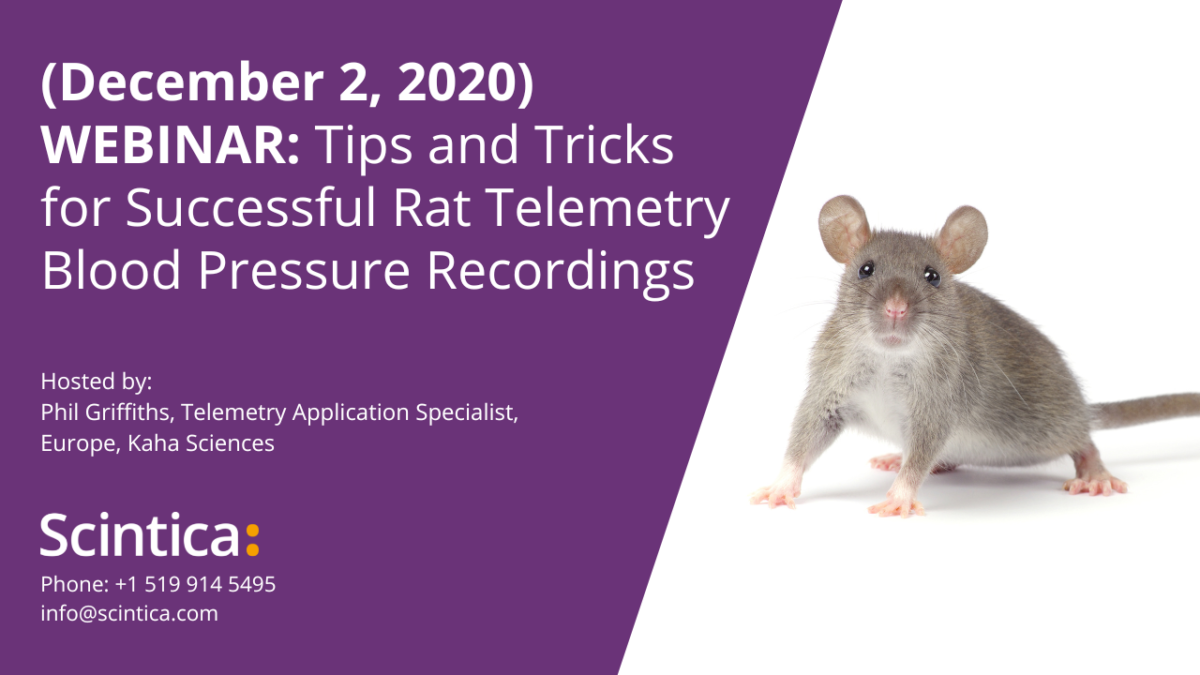
About the Speaker (s)

Phil Griffiths
Telemetry Application Specialist
Europe, Kaha Sciences
Phil has a BSc and PhD in Neuroscience from the University of Bristol, UK and spent several years at Bristol as a post-doc investigating the central control of blood pressure. Over the course of his career in academia he gained extensive expertise in rodent in vivo procedures, including in vivo electrophysiology and blood pressure telemetry using the Kaha Sciences telemetry system. He has presented at several international conferences and published his research on the role of the neuropeptide apelin in the central control of blood pressure. Phil’s current role at Kaha Sciences is to provide sales and technical support within the European region, utilising his experience as a user to understand customer applications and needs.